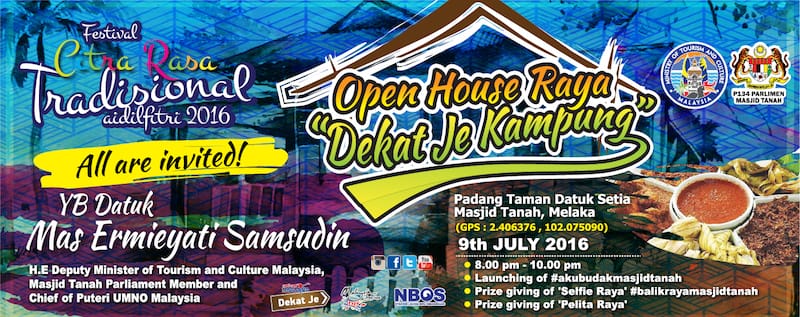CHAP GOH MEH
However, all things wonderful will eventually come to an end. As the eve of Chinese New Year is celebrated with a big bang, the climax of this festival is also a grand affair.
On 22 February, the Chinese will observe the Lantern Festival, or Chap Goh Meh, the Hokkien term for the 15th night of the new year. This day is also known as Yuan Xiao Jie, an important festival signifying the end of the Chinese New Year celebrations.
As in other celebrations, there are many legends and stories about the traditions and celebrations of Chap Goh Meh. According to folklore, during ancient times, young girls were forbidden to go out except on Chap Goh Meh when they could visit temples accompanied by their maids. For the guys, it is the chance for them to catch a glimpse of these lovely maidens. This explains why Chap Goh Meh is also regarded as the Chinese Valentine’s Day.
On the night of Chap Goh Meh, unmarried girls will throw tangerines in the sea or river in the belief that they will be able to marry good husbands. But in this age of information technology, this tradition is slowly dying out, particularly in major towns of the country.
However, those who would like to witness the lively atmosphere of the Chap Goh Meh celebrations can visit Thean Hou Temple in Kuala Lumpur. Located on top of Robson Hill off Jalan Syed Putra, its architecture will interest visitors, particularly tourists. Every year, thousands visit the temple to offer prayers to the three deities: the Goddess of the Seas (Thean Hou), the Goddess of the Waterfront (Swei Mei) and the Goddess of Mercy (Kuan Yin).
During the celebrations, visitors will see a colourful display of brightly lit red lanterns and lion dances. The Chinese will throng the main temple shrine to offer prayers to the deities and obtain blessings. Besides that, visitors to the temple will also drink ‘holy water’ from the Kuan Yin fountain for good health and good luck.
Tourists can take photographs of the dragon-inspired columns and pagoda rooftops. Before leaving the temple, remember to get some souvenirs from the souvenir shops at the lowest level.
In the northern state of Penang, also known as the ‘Pearl of the Orient’, Chap Goh Meh is a major event. The island is renowned for fine beach resorts, colourful festivals and mouth-watering food.
The celebration of Chap Goh Meh can be seen every year in George Town, the capital city of Penang, at the Esplanade, a well-known waterfront promenade that stretches from the hawker stalls at one end to the clock tower at the other. It is located next to Fort Cornwallis, which was built on the site of Captain Francis Light’s historic landing in 1786.
Besides the lion dance and traditional cultural performances, there is an opportunity to see hopeful Chinese girls throwing tangerines into the sea with the wish to marry good husbands.
ENDS
For more media releases, media info and media features on Malaysia’s tourism industry, kindly visit the Media Centre of Tourism Malaysia’s website at http://www.tourismmalaysia.gov.my/
MALAYSIA TOURISM PROMOTION BOARD OR TOURISM MALAYSIA is an agency under the Ministry of Tourism & Culture, Malaysia. Tourism Malaysia focuses on the specific task of promoting Malaysia at all levels. Since its inception, Tourism Malaysia has grown by leaps and bounds and it has emerged as a major player in the international tourism scene. In 2014, Malaysia registered 27.4 million tourist arrivals and RM72 billion in receipts, making tourism its second largest foreign exchange earner.
Through the Tourism NKEA (National Key Economic Area), collaborative efforts between the Ministry of Tourism and Culture, other Government agencies and the private sector have been enhanced to help secure Malaysia’s position as a leading tourist destination and achieve the country’s target of 36 million tourist arrivals and RM168 billion in receipts by 2020.
The targets set under the Tourism NKEA will be achieved through the implementation of twelve Entry Point Projects (EPPs) clustered under five themes: Affordable Luxury; Nature Adventure; Family Fun; Events, Entertainment, Spa and Sports; and Business Tourism.
Press contact:
Media Relations Unit:
Shukri Hanafiah, Senior Deputy Director, Corporate Communication Division
Tel: +603-8891 8767
Email: shukrihanafiah@tourism.gov.my
Editorial Unit:
Anis Rozalina Ramli (Ms), Senior Editor, Corporate Communication Division
Tel: +603-8891 8759
Email: anisramli@tourism.gov.my

 View Previous
View Previous

